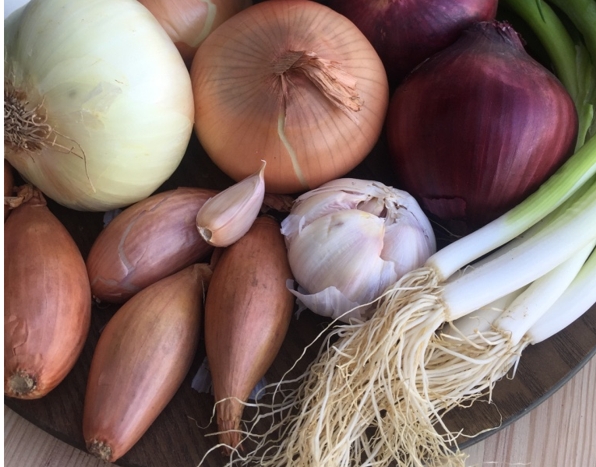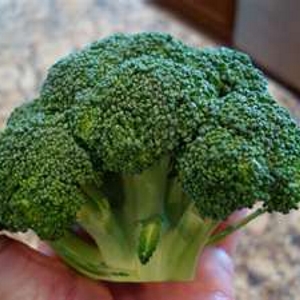Researchers have figured out how to quantify polysulphide content in 22 types of veggies. The work is being hailed as a breakthrough in nutrition science, since polysulphides are known to be powerful anti-oxidants. Conclusion? Eat more Garlic and Broccoli!
 Onions and garlic: genus allium. High polysulphide content makes them powerful
Onions and garlic: genus allium. High polysulphide content makes them powerful
anti-oxidants! Ditto cruciferous veggies such as cabbage and broccoli…
Fighting oxidants
Anti oxidants have long been known to protect against inflammation – which has, in turn, been closely connected with major diseases and conditions such as Alzheimer’s disease, arthritis, cardio-pulmonary disease and cancer. Systemic inflammation has also been associated with both the physical and cognitive aspects of aging.
In the past couple of years, we’ve seen and heard of a great deal of research focusing on known and potential anti-oxidants such as polyphenols, anthocyanins, isoflavonoids and xanthans, along with specific vitamins and minerals. It has also been known that polysulphides are useful anti-oxidants, but up to know there has been no way to quantify the polysulphide content of various foods. And that’s made it impossible to say which veggies are most valuable for their polysulphide content.
A valuable new source of polysulphides
Now, Japanese researchers from Osaka Metropolitan University have found a way to quantify polysulphide content in veggies. And the Japanese group has uncovered which veggies are highest in polysulphides, and thus most valuable as anti-oxidants.
What they found
Two new types of veggies have been identified as particularly rich sources of anti-oxidants: genus Allium and genus Brassicaceae. Alliums include the Garlic and Onion families, while the Brassicaceae are comprised of the so-called cruciferous veggies such as cabbage and Broccoli.
Odd, isn’t it, how plants already known as or suspected of being being especially healthful turn out to contain new types of healthy compounds when the latter are identified.
My take
Nutritionists and dieticians have long recommended we include lots of onions and garlic in our diets, based on observational evidence. Ditto the cruciferous veggies. But only recently has science begun to uncover precisely why those types of veggies are so healthy.
An observation: It would seem best not to overcook alliums or cruciferous veggies, although they tend to have strong, bitter flavours when raw. They are also quite hard, structurally, begging for a certain amount of cooking to make them pleasant to eat. As we all know, the more you cook a fruit or veggie, the more of their ‘natural goodness’ you cook out of them. Try to maintain a happy medium.
But whatever you do to help fit alliums and criciferous veggies into your diet, do include more of them wherever you can!
~ Maggie J.

